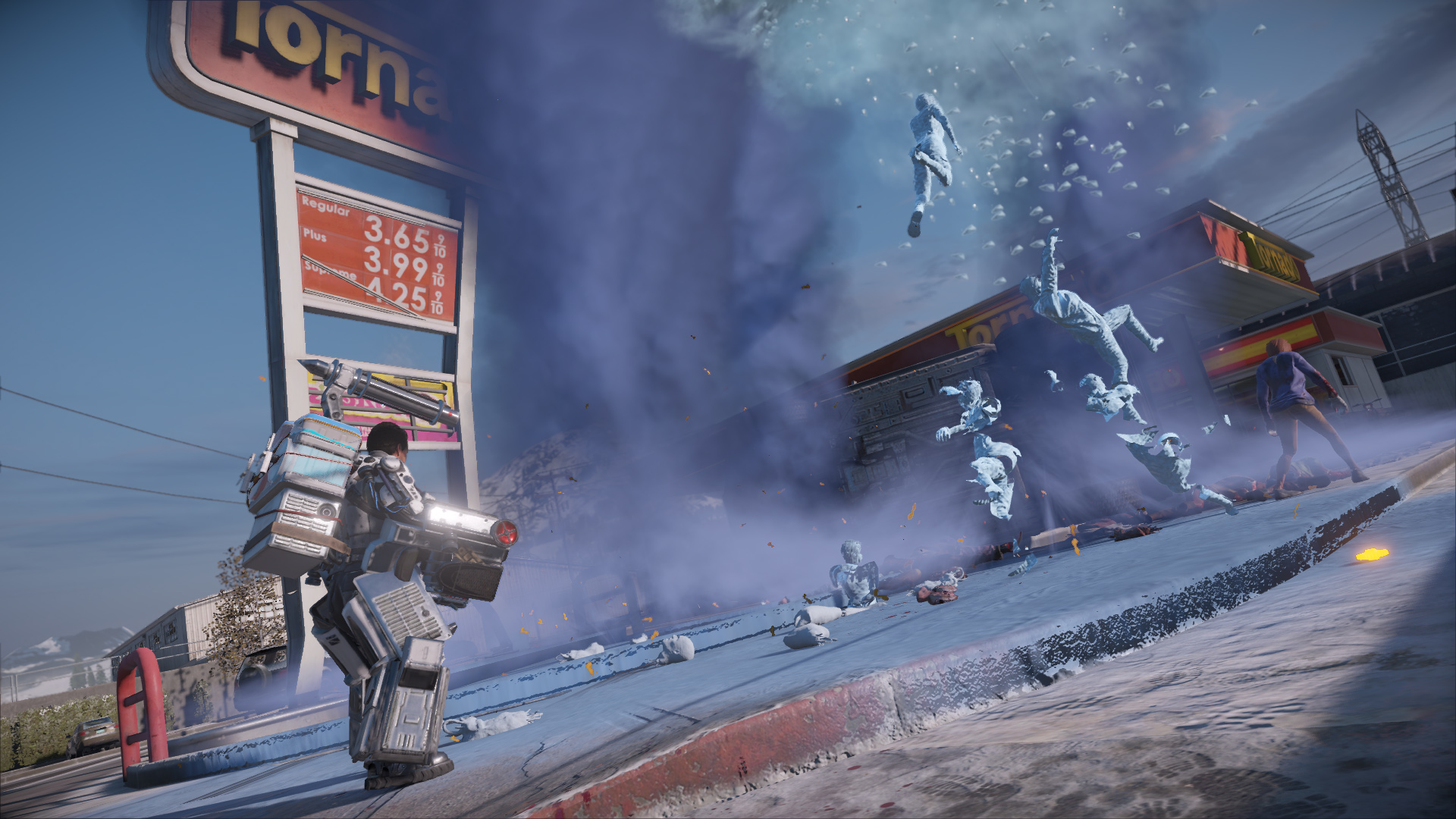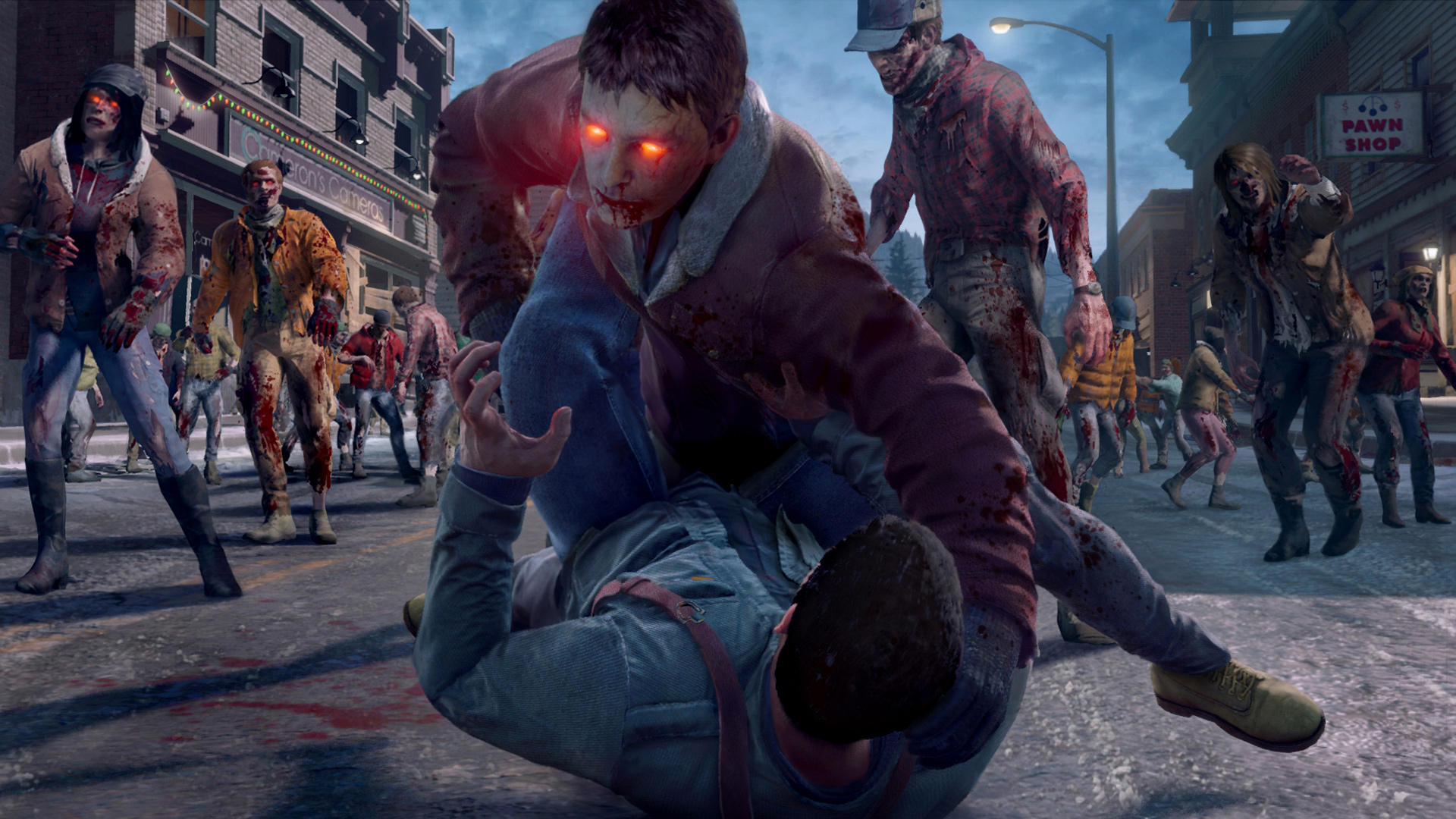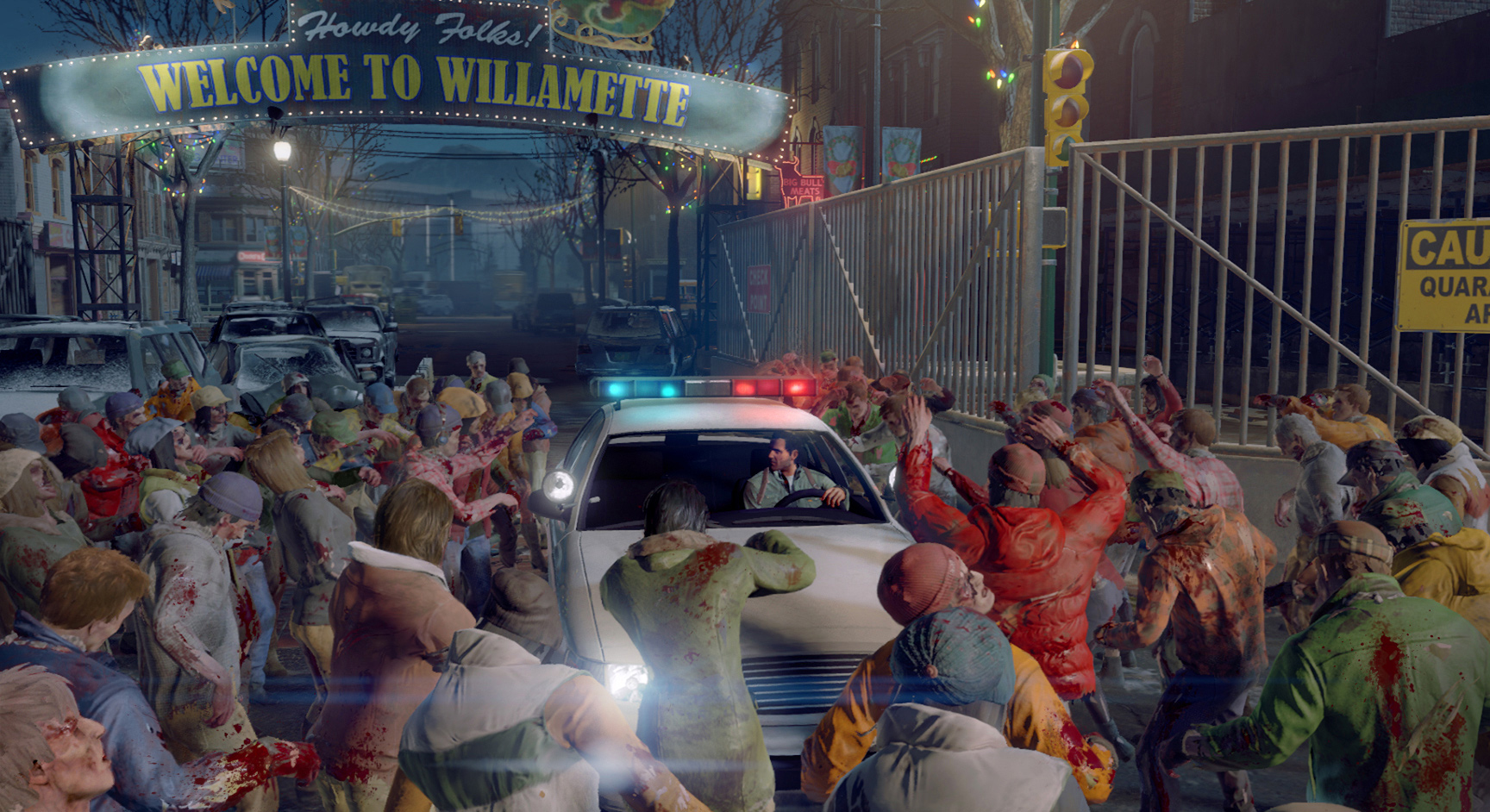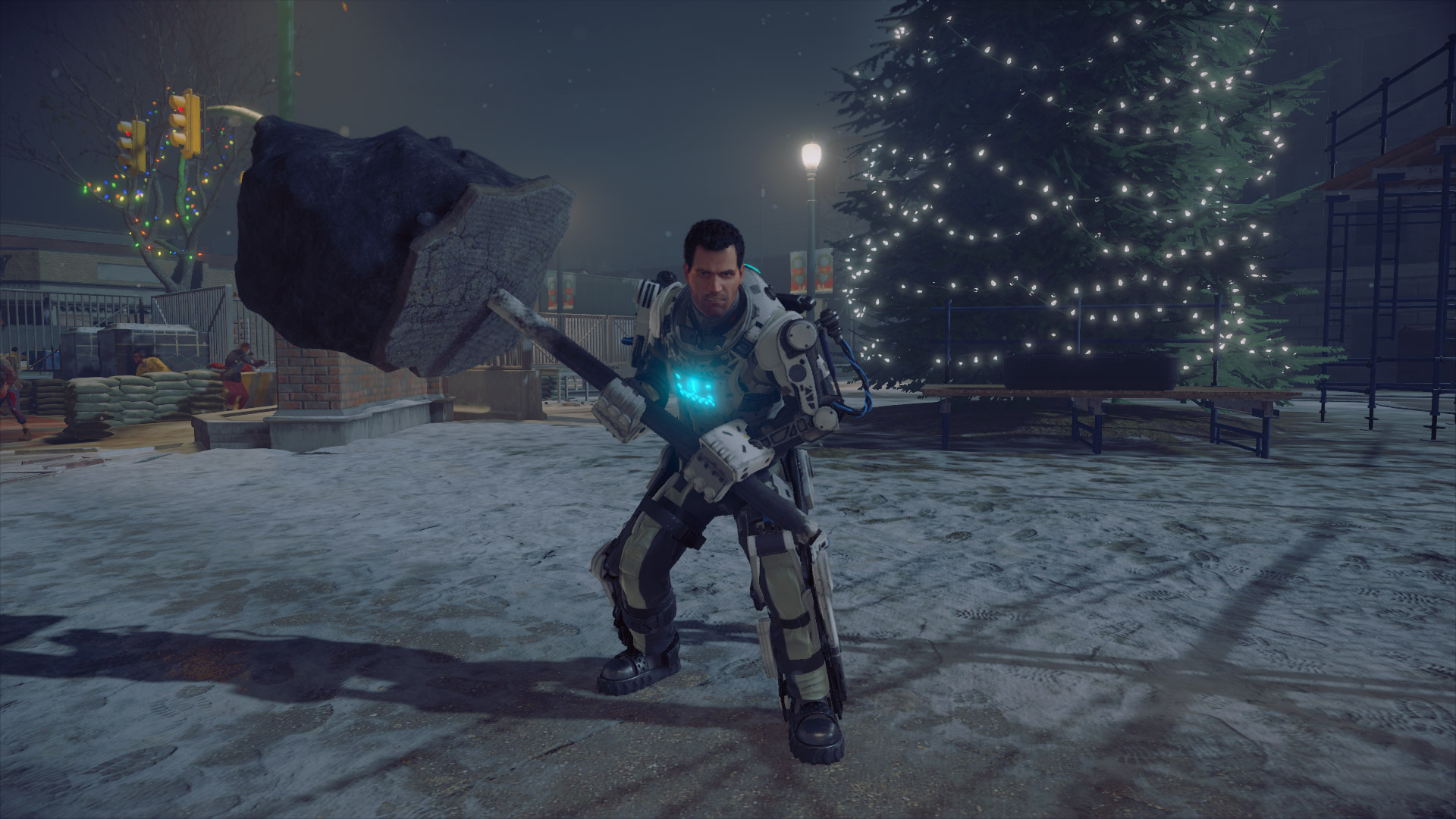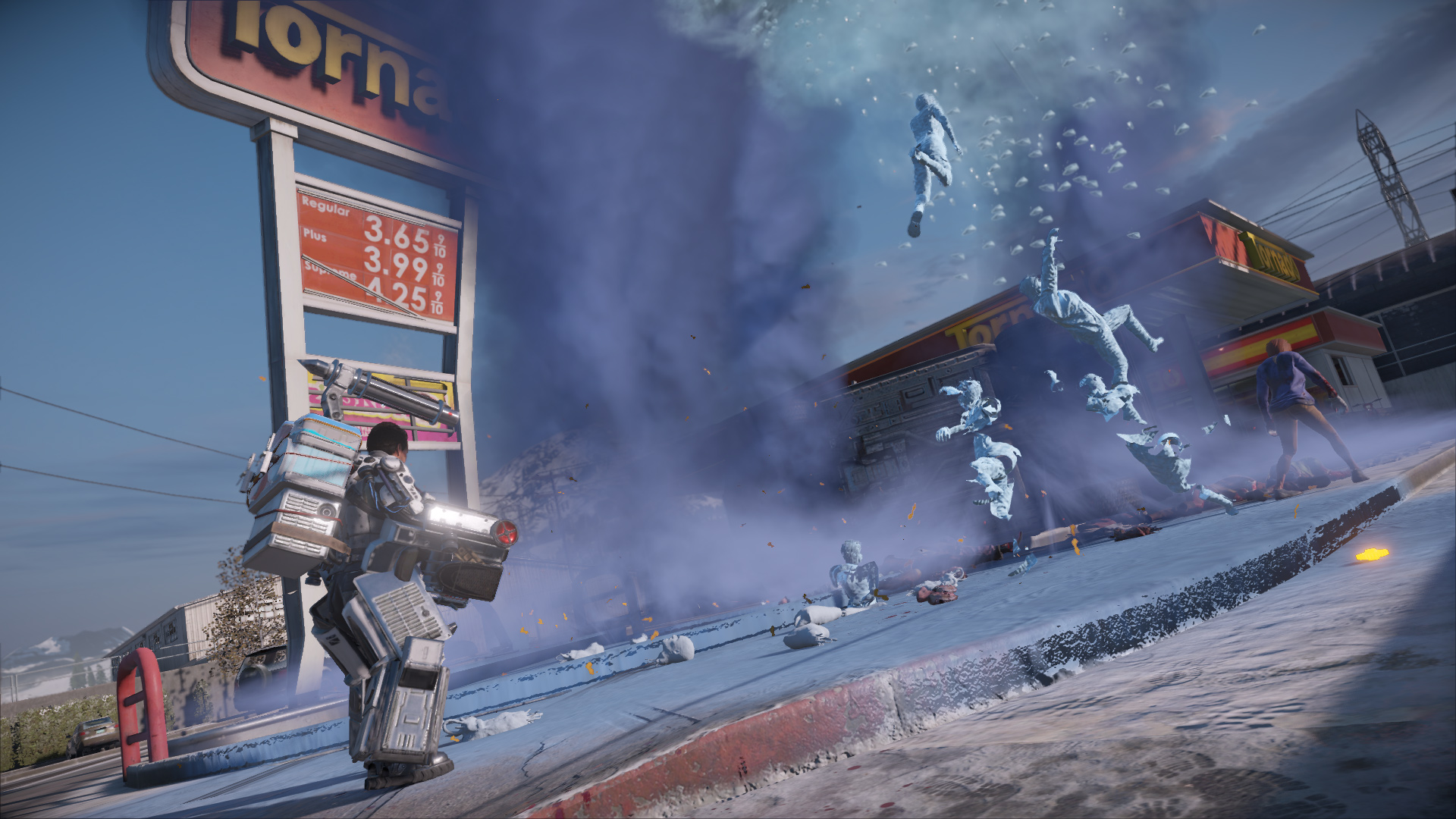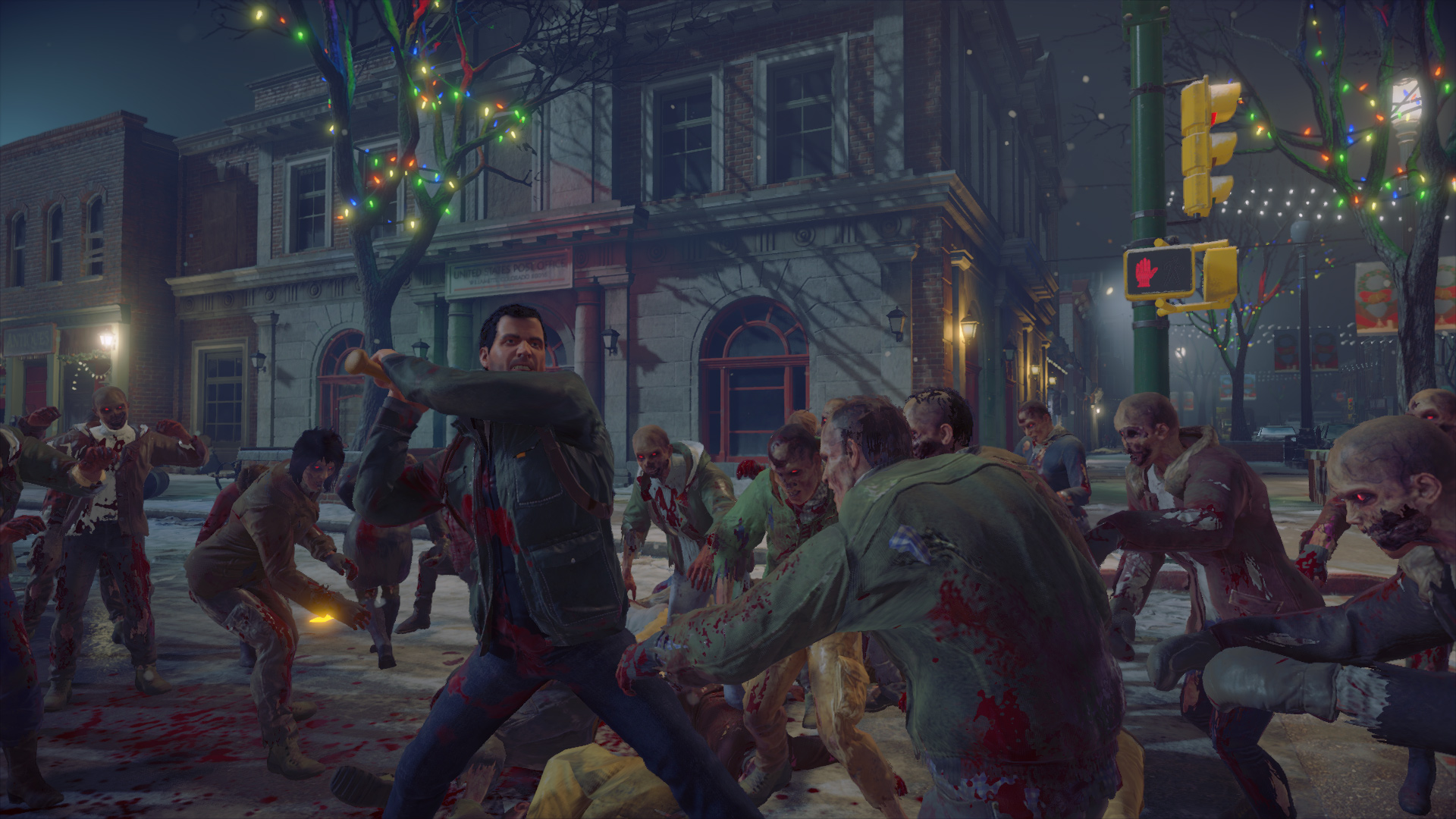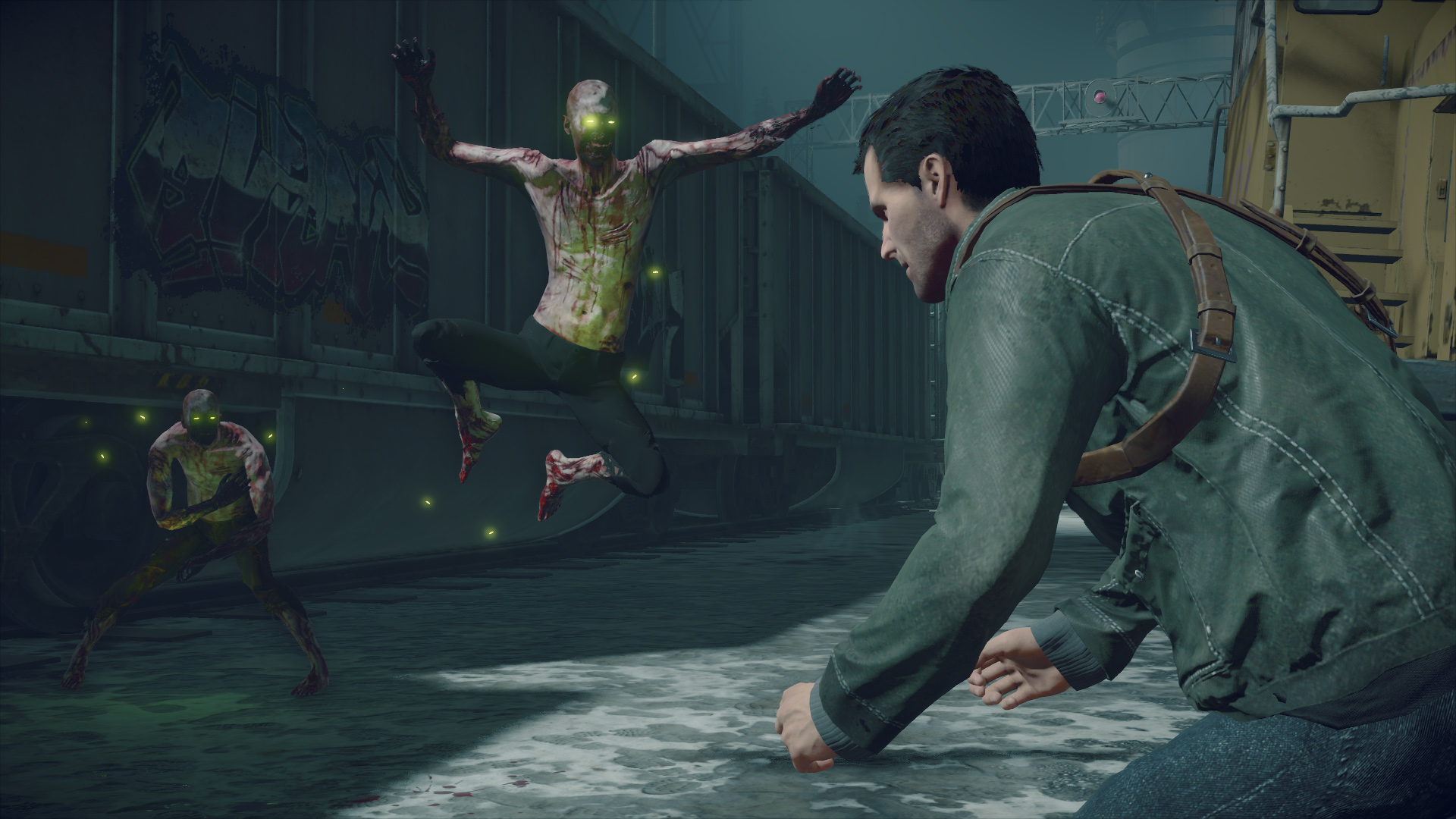
Dead Rising 4 marks a new, more open direction for the cult zombie horde killing franchise.
The series started with the original Dead Rising back in 2006, an Xbox 360 launch window title and arguably the first game that showed off what the console was capable of graphically, then, a few year later, Dead Rising 2 launched, continuing the game’s staple wacky style. Japanese game publisher Capcom eventually handed off the franchise’s reigns to Capcom Vancouver, formerly Blue Castle Games, for the third entry in the series, the ambitious but glitch-filled Dead Rising 3.
The issues Capcom Vancouver was forced to circumvent with Dead Rising 3 were significant. First, the studio was taking over a series that was originally created by a Japanese developer is an amusing commentary on American culture. Being a Canadian studio, Capcom Vancouver was tasked with westernizing Dead Rising 3’s gameplay for the Xbox One, striking a balance between the quirky nature that made the series so popular in the first place, but also still modernizing its mechanics.
Ultimately Capcom Vancouver ran into difficulties with getting the game to run stably on the Xbox One, in part likely due to the game’s strict launch window. With Dead Rising 4, however, Capcom Vancouver worked closely with Microsoft in order to optimize Dead Rising 4’s performance, resulting in a significantly more stable experience.
Bryce Cochrane, the game’s executive producer, says the studio has made a number of changes to the series, including removing co-op gameplay in favour of a deeper singleplayer story, controversially nixing the time constrains that have been a series staple, and amping up the number of on-screen zombies.
Last week, on the eve of Dead Rising 4’s release, we sat down with Cochrane to discuss the Canadian-developed title.
Question: Frank West, the main character from the original Dead Rising, is back in Dead Rising 4. Why did you decide to revive Frank and will we see any other characters from past games?
Bryce Cochrane: After the events of the first game, Frank kind of went into a slump after that. He wasn’t being taken seriously and was kind of considered a conspiracy theorist. The game also comes after Dead Rising 3 chronologically.
We’re going back to Willamette, Colorado, so we’re going to be talking about Dr. Barnaby and his story from earlier Dead Risings. We also brought back Brad Park, the head of the ZDC, but the rest of the characters in the game are all new. This is a new chapter in Frank’s life and we wanted to give him some new supporting characters.
Q: Obviously removing the time constraint system from Dead Rising 4 is a controversial move given it’s many player’s favourite part of the series. I have personally always hated it because for me, Dead Rising has always been about messing around and exploration. Can you talk a little bit about why you decided to remove the feature from the series?
Cochrane: We put a lot of thought into that and we went back and forth on the early days of this game when we were starting to make it. Like you said, it’s kind of a polarizing feature; people either love it or hate it, so it’s kind of difficult to make both sides happy in that sense.
We brought back Frank and Frank’s greatest weapon is his camera and he’s investigating. With a game like this we want you to feel like you’re finding the story and investigating the story, putting a timer on you really took away from the experience and really took away from the ability to explore the world and find all the hidden stuff that we’ve put into the game.
We decided to take a step back and take that out of the main game. That doesn’t mean it will be out of the series forever because we have it in our multiplayer mode. We’re going to be using it when it’s appropriate. In the DLC we’re putting out, there will be a timer…
Q: So players can move through at their own pace?
Cochrane: Yea, exactly. There are going to be some choke points as you progress through the game but once you unlock the entire game, you’ll be able to go anywhere you want. We put a lot of effort into rebuilding the town of Willamette and the mall of Willamette.
If you look down at Willamette compared to the size of Dead Rising 3, it’s about the same size in footprint, but we put way more explorable areas in this game than we have had before in a Dead Rising game. We have the mall shop, we have old town, we have the Ridge, we have an industrial area and we have an army base. We want you to go in and be able to explore it. Obviously, there’s the main story line in there but we also put a lot of effort into side content and stuff you can just discover yourself…
Q: Co-op is also not making the cut this time. Why did you decide to drop the feature? Part of the appeal of Dead Rising, at least for me, has always been the series’ co-op mode.
Cochrane: Again for us, it kind of went back to Frank. Because of him having to do the investigation, having co-op plays and two players doing it really made it hard to do the kind of story we were trying to tell.
For this one, we decided to really focus on Frank. You do have some companions that come with you sometimes in the game. It’s really the story of Frank.
Q: You have a multiplayer mode again this time as well, right? Does that make up for the missing feature at all?
Cochrane: Yea, that’s where we really went to town with playing up the fun aspect of the game. I know Dead Rising is a serious game with silly stuff thrown on top of it, but the multiplayer mode was really designed for fun and just having fun with your friends on the couch.
It’s four brand new characters and it all takes place in the mall.
Q: Does the game still maintain the campy tone of other entries in the series?
Cochrane: Oh yea, 100 percent. That’s part of why we wanted to bring back Frank. He’s an amazing character for that and the thing about Dead Rising is you get to play it the way you want to play it. So even though Frank is a very interesting character, he was originally created out of Japan and he was a reflection of what Japanese developers thought American culture was a little bit; you can see this in Dead Rising 1.
So we’ve had to expand on that. Obviously, we don’t have the same perspective since we’re a North American company. We don’t have that same take on what an American is since we’re Americans and Canadians…. We refer to Frank as the unlikely hero, he complains and moans but he always does the right thing.
He’s always out for the truth. One of the jokes I always make about Frank is that I’d love to meet him at a bar one night and listen to him tell me stories all night long, but I’m not going to introduce him to my buddies. He’s just a little too much of an ass.
Q: As a North American/Canadian developer, what has it been like to pick up a series that was originally created in Japan?
Cochrane: Obviously having the opportunity to pick up Dead Rising here at Capcom was amazing for us and we worked really closely with Capcom initially and this was kind of their overall goal. They saw a cult hit in Dead Rising 1 and they realized they had something really great here but they wanted to expand it to be more than a cult hit.
That’s something where we spent a lot of time looking at that. How do you do that? How do you keep some of the quirkyness that was in the original games but also expand upon it. Like I said, we’re a game where you play it the way you want to. If you want to be straight shooting Frank all the way through and never put on a turkey costume and make crazy combo weapons, that’s your choice. I know that’s not the way I like to play it, but that’s your choice…
Q: Were you able to iron out the issues from Dead Rising 3? I liked the game but it suffered from a lot of technical problems.
Cochrane: This is the second time we’ve made a game for the Xbox One and we’ve again partnered with Microsoft. So we’ve worked really closely with their technical teams.
When we built this game we built it from the ground up again from the learnings of Dead Rising 3, so we got way better at optimization, we made much better choices with animation, environments, characters, models. We played with all the levers and knobs we could to push the boundaries of how many zombies we could have [on-screen] but still maintain the quality at the same time.
This interview has been edited for style and length.
MobileSyrup may earn a commission from purchases made via our links, which helps fund the journalism we provide free on our website. These links do not influence our editorial content. Support us here.

